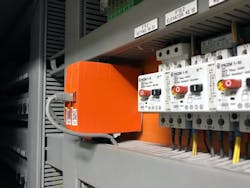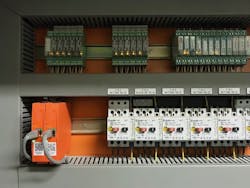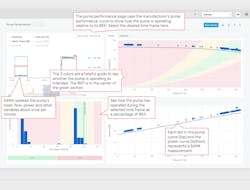How AI is Helping the Water Industry Wash Away Unplanned Downtime
Tim van Leeuwen is head of sales for Samotics. Tim van Leeuwen can be reached at [email protected].
undefinedWater management companies play a critical role in the day-to-day running of the cities, regions, and provinces they oversee. Any unplanned downtime or failure comes not only at the expense of reactive repairs but poses serious risks to employees and citizens – not to mention potential fines and bad press.
With so much at stake, the water industry is looking to new digital initiatives to not just reduce failures but optimize maintenance operations and energy efficiency. The reactive and preventive maintenance strategies of the past have largely been ineffective or inefficient. Responding to maintenance issues after they occur is expensive and unsustainable in the long term. On the other hand, preventive strategies that use time as a measure to pre-empt failures can often result in unnecessary checks on perfectly healthy equipment. 82% of all assets may fail at random, something no amount of clock-watching can prevent.
Removing the guesswork is key to eradicating unexpected failures. Utilizing a combination of smart sensors and artificial intelligence (AI), a new model of predictive maintenance is offering the water sector a way to reduce risk, while optimizing operations.
The Invisible Problem: Challenges of Water Maintenance
The water industry has several unique facets that make its maintenance issues especially complex. Each company or organization can have thousands of pumps, mixers, blowers, and centrifuges to monitor. For pumps especially, there is a high risk of blockages from what is discarded in wastewater systems, which includes but is not limited to grease, wet wipes, pieces of wood and even mattresses. Not only do these dramatically shorten a pump’s lifetime, but these make it more difficult and dangerous for maintenance crew to monitor and rectify.
Another challenge is caused by assets which are largely out of sight in hard-to-reach locations, either submerged or underground. This often hides problems and makes maintenance, repairs, and inspections costly and challenging for personnel. In turn, this means unnecessary checks and replacing equipment that is still healthy are an equally important consideration.
Energy consumption and efficiency are rising high on the agenda too. The water industry accounts for 4% of global electricity consumption. Plus, any water losses and shortages pose a considerable risk.
Some innovative water companies are embracing a new approach to detect signs of machinery decline sooner, minimizing downtime while ensuring optimal performance.
RELATED: Variable Speed Drives: Drive as a Sensor?
How AI & Smart Asset Monitoring is Helping
Data accumulated from permanent sensors is key to spotting the signs of breakdown well in advance and optimizing maintenance. Combining continuous asset health monitoring with AI is helping many players in the water industry to not simply fix and prevent but predict when challenges and failures might occur.
Electrical signature analysis – or ESA – is the technology behind many of today’s most advanced solutions. It translates AC current and voltage data into powerful, actionable insights. Non-invasive sensors are installed in motor control cabinets, where high-frequency current and voltage data are captured around the clock. Using this data, the AI backend establishes a baseline model that it can then use to recognize triggers or “fingerprints” of failure – data hallmarks that indicate when an asset may be in decline. As the AI system compiles an ever-growing catalogue of “fingerprints,” the accuracy involved in spotting upcoming mechanical and electrical failures continuously improves.
Crucially for the water industry, this approach helps solves the problem of monitoring submerged equipment. Most asset monitoring techniques require sensors to be placed directly on the equipment, which is often not possible for submerged machinery. As ESA sensors are placed in motor cabinets instead, the solution can monitor those tricky to reach pumps and other assets remotely. With insights shared directly to the maintenance team, technicians are also able to be much more effective, ensuring their time and expertise are only used when really needed.
ESA is also able to track an asset’s efficiency and energy usage because it directly monitors the current and voltage. This helps teams replace and repair assets at the best time, lowering energy emissions, and also helps bring process inefficiencies to light. As electric motors are often the biggest consumers of energy in water organizations, there are substantial cost and environmental benefits to addressing these inefficiencies.
RELATED: Sewer Monitoring Turns to AI
ESA in Action – Pump Failure Detection
Pumps are at the heart of most water agencies. Leading ESA solutions have optimized analysis of these assets and are now able to predict most failures up to 5 months in advance, with +90% accuracy. One of the most valuable, unique features an ESA system can provide is a real-time pump performance curve because ESA has direct knowledge of the current and voltage. The performance graph can show precisely when a pump is operating off its best efficiency point and provide insights into its power consumption. These real-time performance indicators are invaluable to extending asset life and optimizing energy efficiency.
To show this tech in action, a real-world example comes from a submersed cooling tower water pump at a chemical plant supporting industrial wastewater treatment. The ESA system detected sudden changes in two of the six pumps it was monitoring: a rise in energy at the pump’s rotational frequency combined with a drop in active power. Being permanently submerged, these pumps were extremely difficult and expensive to access. As a relatively new customer, and as its other non-ESA monitoring systems were yet to detect anything, the chemical plant was hesitant to pull up the pumps just yet.
Eventually, the maintenance team pulled up the pump with the most significant anomalies for inspection. In the diffuser, they found a chunk of wood and, on opening the discharge filter, they also found a piece of the impeller had broken off. As a result, they had no choice but to replace the whole pump at a cost of €45,000.
However, now convinced of the new ESA system’s predictions, they pulled the other pump for inspection. In that pump, they also found chunks of wood in the diffuser but, thankfully, just a hairline crack in the impeller. This meant the damage was caught early enough to warrant a straightforward repair to the impeller instead of having to replace the whole pump. All the while, none of the co-existing monitoring systems had detected anything abnormal.
Act instead of React – The Future for Water
As with all AI-based technologies, modern condition monitoring systems only get smarter over time. The larger the library of past data, the more the software can learn and improve its accuracy. For companies including Anglian Water, this means the value of the insights ESA delivers will only improve in the future.
There are benefits far beyond operational savings too. Experienced maintenance professionals are in decline globally but with AI, their job transforms, reducing unnecessary and often dangerous equipment checks to ensure their expertise are applied when and where they are needed most. As a result, a smaller staff can reliably maintain a larger fleet.
Increasingly, the value of ESA is being recognized and even called out in RFPs for smart asset monitoring solutions. Organizations in the water industry are being empowered to take a more proactive approach to maintenance, making data-driven process decisions and taking action to navigate unplanned downtime.



